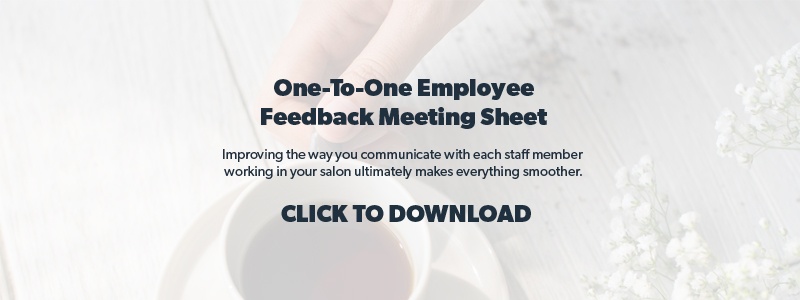Preface by Alex Bélisle-Springer, Digital Content Editor
Most of our ideas for blog posts and podcast episodes come from our readers. Sometimes we get them through emails and suggestions, other times thanks to keywords and search terms. For this delicate topic – dealing with bullying & harassment issues – the idea came from a few real-life anonymised situations where a salon client crossed a line and became a little too handsy. Seeing how many people got involved in giving advice, we figured we’d dedicate an article to the topic. If you’ve ever been in such a situation, want to know how to protect your employees or want to know what to do if it ever does happen in your salon, Michelle Bolger’s article is one to bookmark. There would have been no better woman to approach the topic.
Listen to the audio version of this blog, and subscribe to the Phorest Blog Podcast here:
Communication, Communication, And More Communication
I am a firm believer that the only way to tackle bullying & harassment anywhere is through open communication. For your staff, that starts with your management meetings.
“But Michelle,” I hear you say; “We are run off our feet and don’t have the time!?”
Sometimes, entrepreneurs need to be reminded that working hard and working smart are two different things. We all have the same hours in the day – how we use them will result in very different things. You should be having weekly management meetings. You can say that you are too busy to have a 30-minute one-to-one with staff once a week all you want, but I’d bet money that you spend 3x that amount of time – at least – dealing with niggly uniform issues, late issues, etc. All of which never quite get resolved, but eat into your productivity.
Am I right?
Bullying & Harassment: Zero Tolerance Policy
Now that you are hopefully more on-board to hold your 30-minute meetings, one of the key things to address is that you have a zero tolerance policy on bullying & harassment.
Let’s be clear: there is no definitive way to deal with a handsy client or a client who isn’t reasonable. However, at the core of every plan of action has to be your employee’s safety and well-being. Remember, by law, you owe your employees a duty of care. In saying that, you also need to let your staff know that:
-
- they are your most valuable asset
-
- you don’t want them ever feeling uneasy with a client
- you have policies and procedures set in place to help them deal with uncomfortable situations
A Case-By-Case Approach
Ideally, you should have two members of staff working at any one time. If a staff member really feels uncomfortable with a client, then they can initially swap with another employee. You will have to decide on ‘excuses’ for this that work for your salon/spa and ethos – e.g. “Sarah specialises in dry skin/damaged hair, and I think she will get you better results.”
The employee should be encouraged to write down what their experience was and why it made them feel so uncomfortable.
This gives you the employer, who may not always be at hand, an opportunity to go through the issue with them at a later date. It also ensures that the employee knows, at the very least, that you are listening and want to know what has happened. Then, meet with the employee who takes over the treatment and listen to what they have to say about the client.
From here, two scenarios:
-
- If it is a case of ‘clash of personalities,’ then put a note on your file to allocate specific staff to that client.
- If the client is an issue, then you are going to have to decide if you are prepared to expose your staff to that type of behaviour.
The second prong as an employer is that you are now on reasonable notice of foreseeable risk. What does that mean?
Well, it means that if you allow that client back, knowing as you do that they upset or even assault your employees, you will be held legally liable for the consequences, as you knew that it could happen.
Truly Unacceptable Behaviour
It is also essential for your staff to know what to do if a client’s behaviour is unacceptable – i.e. overtly sexual comments, physically touching them inappropriately or being totally unreasonable. Again, you have to decide what will work best for your salon or spa.
-
- Are you happy to let your employee make the call and tell the client to leave?
- For bullying & harassment issues, would you rather they contacted a manager or another staff member?
My recommendation is that if something overtly unreasonable and unacceptable happens, that the employee brings another employee into the room and explains to the client in front of the-employee-turned-witness what is making them uncomfortable and why they are not prepared to continue the treatment. This safeguards your employee from any ‘he-said-she-said’ and gives them a witness, as mentioned above. Again, after the incident, have both staff members write down precisely what happened.
Things To Keep In Mind…
Be prepared. If you take such action – i.e. ask the client to leave for instance – he/she may well come back and complain or even complain through their solicitor. This is why it is so important that your employees know how to react in a way that both safeguards them and is defendable should it become a legal matter. A disgruntled client, rightly or wrongly, could claim defamation, harassment, sexism, racism – the list goes on.
I sincerely hope that your clients are always well-behaved and appreciative of the work you do, but bullying & harassment issues aren’t something to let slide until something happens. Make sure you have a policy in place, make time for your meetings and make a plan for the what-if’s. Most importantly, communicate the said plan to your employees and listen to what they have to say.
Got feedback? Let us know either in the comments below or tweet us @ThePhorestWord! (Pssst! We’re on Instagram too!)
Thanks for reading! #LetsGrow



